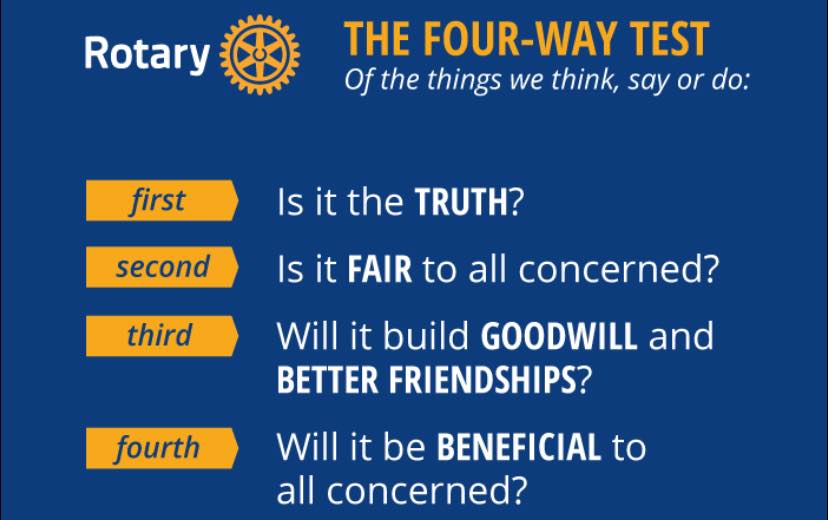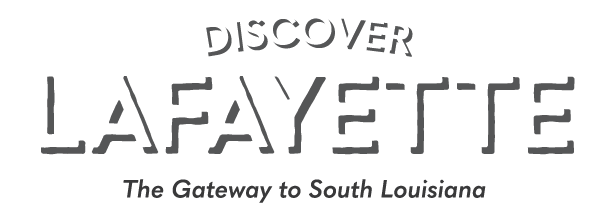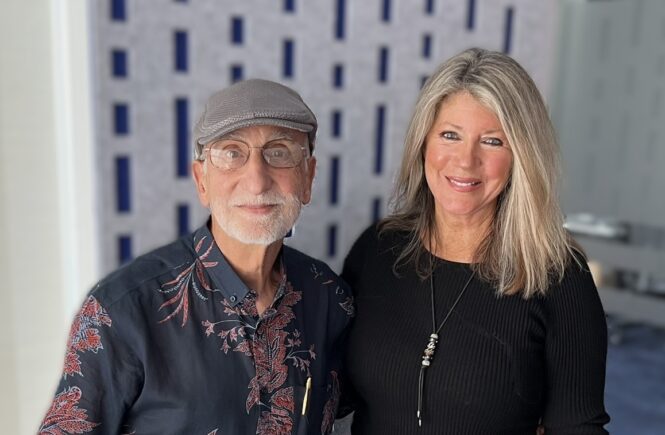Podcast: Play in new window | Download (Duration: 45:12 — 62.1MB)
Fabian Patin, a Lafayette architect whose name has become synonymous with the preservation and beautification of Rotary Point, a peaceful sanctuary on the Bayou Vermilion, joins Discover Lafayette to discuss his decades-long dedication to Lafayette’s waterways and the enduring spirit of civic service that drives the Rotary Club of Lafayette. He has been a loyal member of the club for decades.
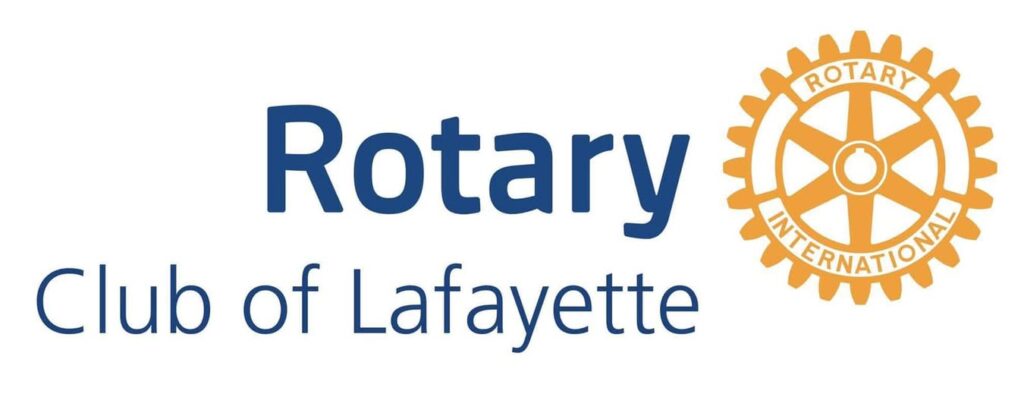
Origins of Rotary Point and the Bayou Vermilion Revival
Rotary Point came to life in the 1980s through a partnership among the Rotary Clubs of Lafayette, the Lafayette Chamber of Commerce, and the creation of Bayou Vermilion District. At the time, Lafayette was in the throes of the oil bust, and the once-vibrant bayou had fallen into neglect and pollution. Patin recalled how his colleague, attorney, Bob Cole, then Lafayette Chamber president, looked beyond the downturn: “Rather than worrying about it, Bob said, let’s do some things to improve it. We’ve got a bayou; it’s not the best one now, but it can be.”
Cole’s optimism led to the creation of a master plan for the Vermilion River. Half the funding came from private citizens and companies, the other half from the City of Lafayette. That plan inspired state legislation to create the Bayou Vermilion District, a nine-member commission—of which Fabian was an original commissioner—charged with implementing restoration and access projects.
To secure federal funding under the Dingell-Johnson Act, Lafayette needed a 20 percent local match. Fabian and local leaders convinced the Parish Council to contribute the unused 400-foot right-of-way from West Bayou Parkway to the Vermilion as the local match. The federal funds, championed by then U.S. Senator John Breaux, completed the financing. Fabian recalled, “If you give us the right to use that land for our 20 percent match, that can be our 20 percent—and it worked.”
How Rotary Point Got Its Name
Initially conceived as a simple boat launch, the site evolved when Fabian—active in both the Bayou Vermilion District and Rotary—saw an opportunity:
“If I can go to our Rotary Clubs and say, look, if we call it Rotary Point, I think I can get our clubs to pay for the overlook.”
That promise birthed Rotary Point, with local Rotary Clubs funding the overlook while the Bayou Vermilion District handled access improvements. It became one of the first public boat launches on the Vermilion and a shared symbol of civic collaboration.
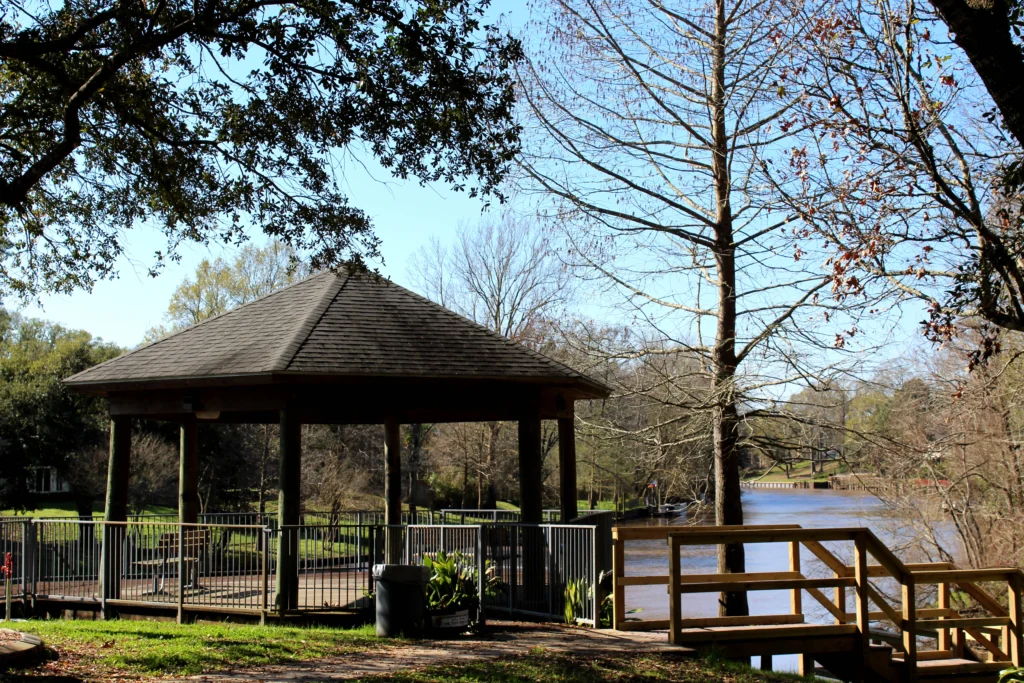
Stewardship and Beautification
Through the years, the Bayou Vermilion District has continued major maintenance—most notably replacing the aging wooden bulkhead with steel reinforcements—while the Rotary Club of Lafayette maintains and beautifies the grounds. Fabian, now 81 years of age, can still be found there almost every day: mowing, planting, spreading mulch, or supervising upgrades.
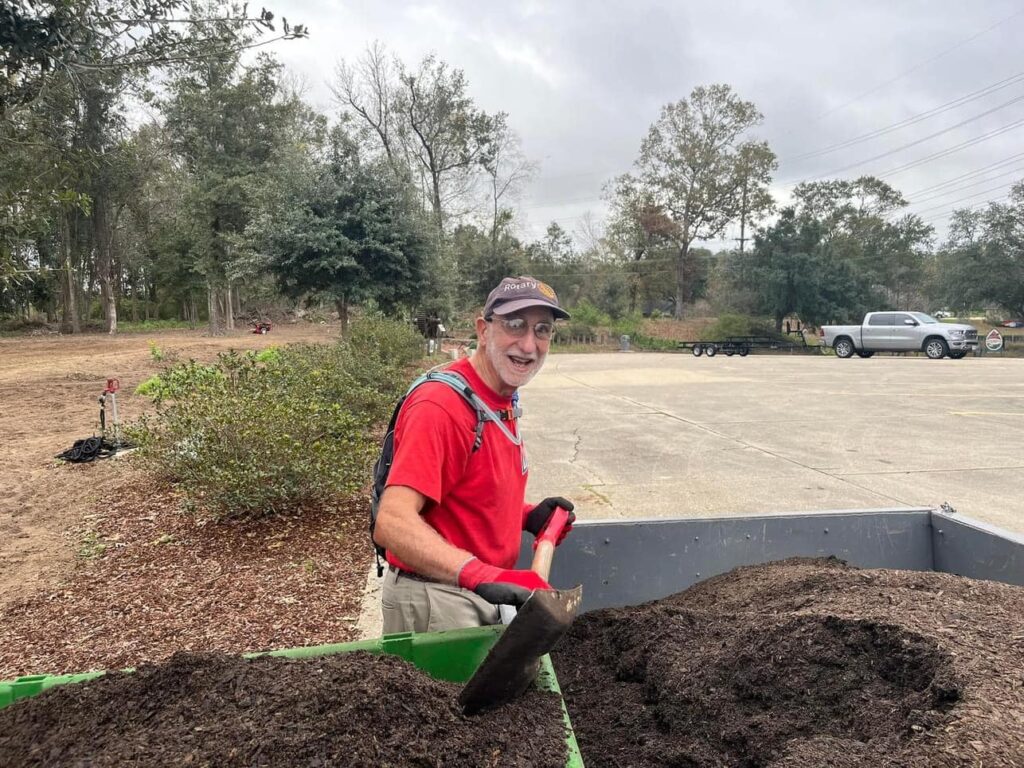
The site now features benches, picnic tables, irrigation, flowering azaleas, and majestic live oaks—many planted to honor international Rotary presidents. Fabian explained how community partnerships brought the space to life:
- Azalea Trail volunteers donated 35 azaleas.
- Trees Acadiana, led by Sarah Schoeffler, provided and planted dozens of plants and live oaks.
- Compost from Lafayette Parish enriched the soil, coordinated by Rotarian Stan Messenger, who negotiated increased deliveries of mulch and soil for the park.
- Dr. Jim Rees established a Peace Pole inscribed in eight languages reading “May peace prevail on Earth.”
Centennial Monument and the Sugar Mill Gears
In 2020, to commemorate the Rotary Club of Lafayette’s 100th anniversary, Fabian spearheaded the construction of a striking centennial monument. The centerpiece: enormous gears salvaged from historic sugar mills, a visual echo of Rotary’s gear-wheel emblem.
“We poured concrete on site. Rotarians learned how to pour concrete.”
Despite an initial $100,000 goal reduced by COVID-era constraints to $18,000, local Rotarians secured, transported, and refurbished the multi-ton gears, some weighing up to 12,000 pounds. The result is one of Lafayette’s most unique landmarks. And it was definitely a hands-on project, as Fabian explained: “One of the smallest gears, and that is seven foot four, was around 12,000 pounds. And Stan Messenger had to go pick it up in his truck and man, it was dragging. The mud flaps were flopping on the concrete.”
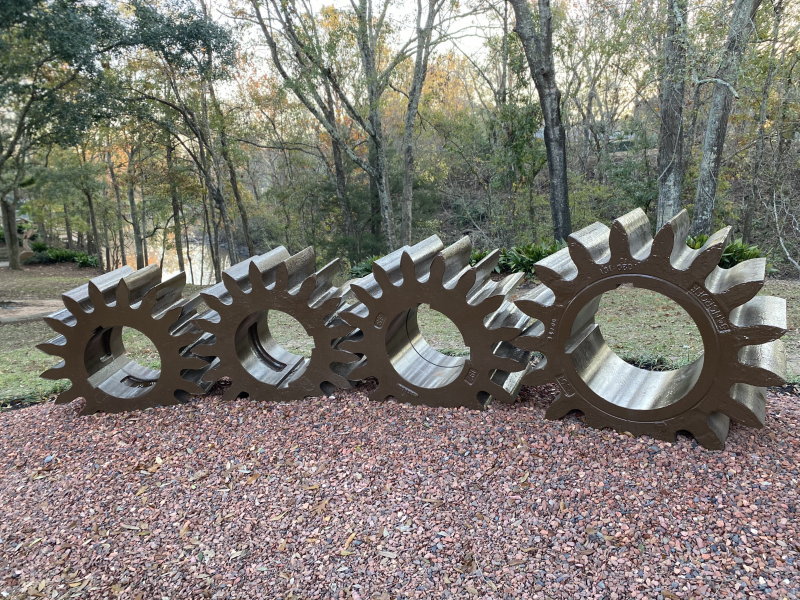
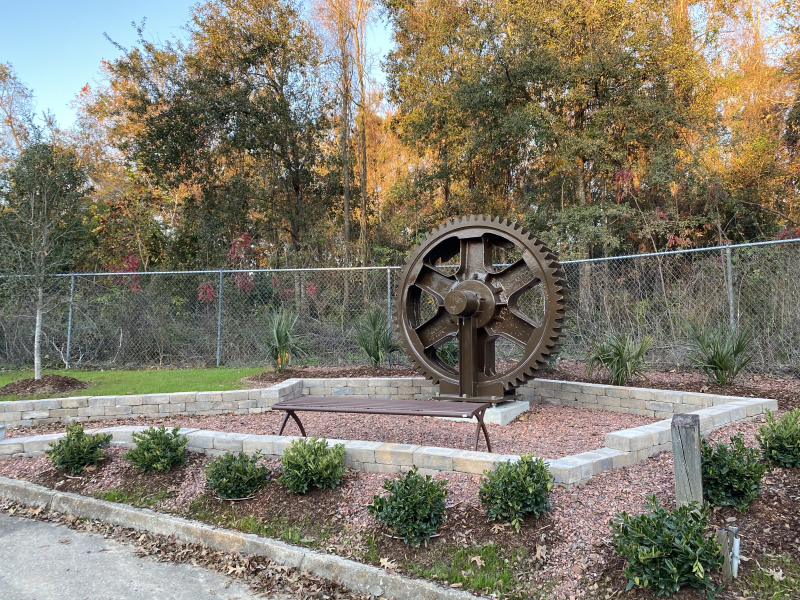
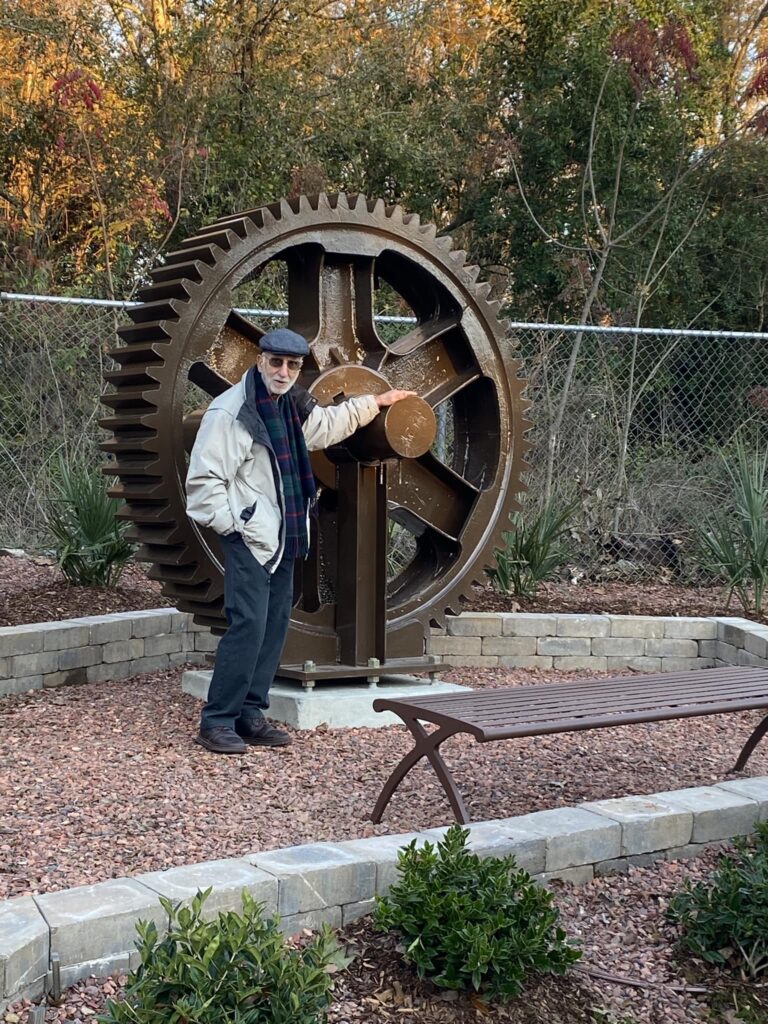
Technology Meets Tradition
Recent additions at Rotary Point include Wi-Fi-enabled irrigation and lighting systems, allowing Fabian and contractors to control water and lighting remotely from their phones. “It doesn’t irrigate when you don’t need to because it’s smart enough to know if it’s going to rain.”
Rotary Point even provides free Wi-Fi to visitors—a small example of how the park bridges heritage and modern convenience.
Rotary’s Global Mission of Peace and Health
Fabian reflected proudly on Rotary International’s broader legacy in eradicating polio worldwide.
He explained how Rotary’s global network—trusted across political and cultural lines—enabled vaccination programs even where governments could not reach, aided by Bill Gates’ two-for-one matching grants.
Rotary worldwide has contributed more than $2.6 billion to fight polio, including matching funds from the Gates Foundation, and countless volunteer hours since launching its polio eradication program, PolioPlus, in 1985. In 1988, Rotary joined in partnership with the World Health Organization, UNICEF, and the U.S. Centers for Disease Control and Prevention to form the Global Polio Eradication Initiative. The Gates Foundation and Gavi, the Vaccine Alliance later joined. When the initiative launched, there were 350,000 cases of polio every year. Today the incidence of polio has plummeted by more than 99.9 percent.
World Polio Day is on October 24, 2025.

The Peace Pole, installed in 2023 and dedicated to Fabian, reinforces Rotary’s worldwide pursuit of peace. “Jim Rees (a fellow Rotarian) has believed in the peace pole, which actually was created in the 50s in Japan because of the problems they had in World War II. The concept was to have peace throughout the world. This is Jim’s fourth Peace Pole. It’s a four inch by four inch by various heights. Ours is tall enough to have in eight languages. Basically it says, “May peace prevail on Earth.”
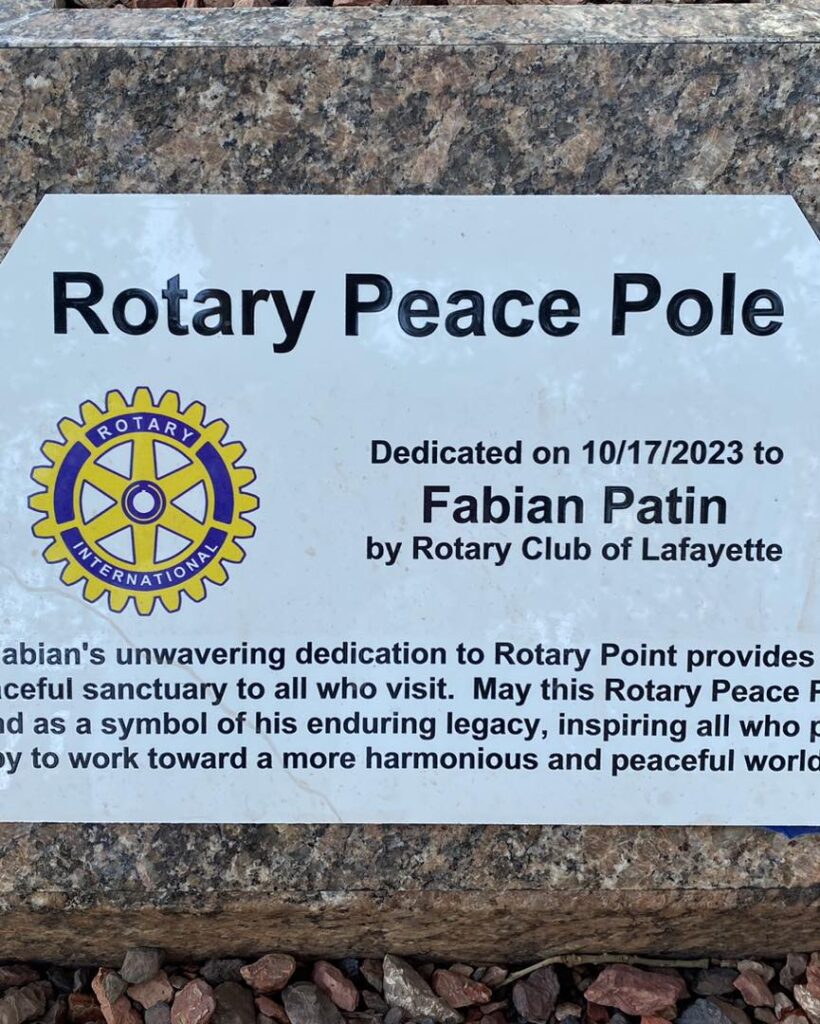
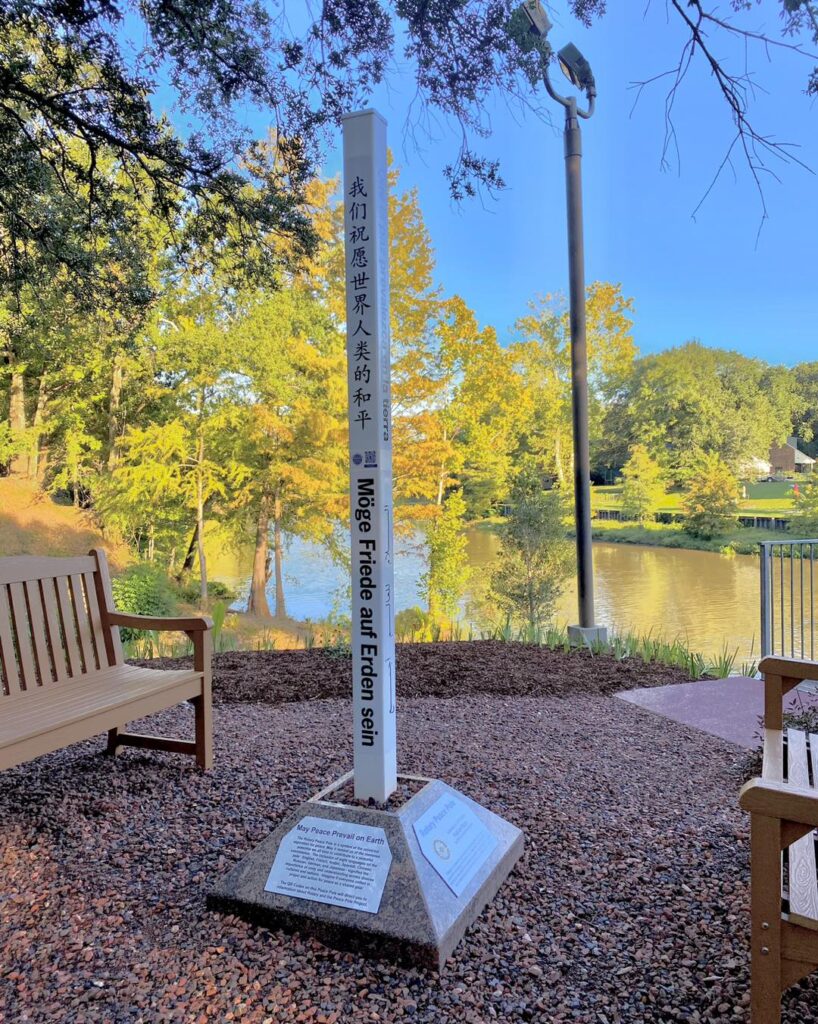
A Life in Architecture and Service
Beyond Rotary, Fabian built a respected career in architecture. His firm handled diverse work—residential, public, and forensic. After the 1980s oil and gas business downturn, he specialized in forensic architecture, analyzing structural failures and materials, and taught at both UL Lafayette and the University of Illinois. He even chaired the committee that developed North America’s architectural licensing exam.
Still keeping current his architect license current, about “99.9% of my work is forensic. Older buildings that are failing or have problems—I like solving them. I’d do it for entertainment.”
Looking Ahead: A Foundation for the Future
Now 81, Fabian’s focus is ensuring Rotary Point’s long-term survival.
“My dream right now is to create a foundation for its long-term survival. That’s my current problem-solving.” He hopes to establish a structure that sustains maintenance and beautification without burdening taxpayers—a “win-win for everyone.”
A Passion for Nature and Sailing
A master gardener and lifelong sailor who enjoys competitive sailing, Fabian’s hobbies intertwine with his stewardship of Rotary Point. From a family of master gardeners, Fabian figured, “If I’m going to really do some stuff at Rotary Point, I better start learning.”
His love of native plants—like the red buckeye, donated by Al Rees—reflects the same thoughtful, hands-on care that defines his civic legacy.
Visiting Rotary Point
Rotary Point is located at 245 West Bayou Parkway, near South College Road. The park offers boat access, walking trails, and tranquil views of Bayou Vermilion. More information is available through the Bayou Vermilion District and Rotary Club of Lafayette websites.
Fabian Patin’s decades of devotion remind us that community improvement begins with stewardship—one tree, one bench, and one problem solved at a time. Rotary Point stands as both a local treasure and a living testament to what vision and persistence can build.
We can all live better lives if we ask ourselves the same four questions all Rotarians follow:
